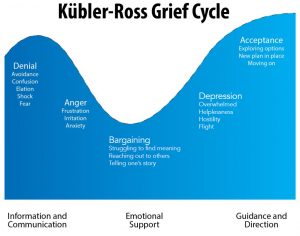The world just changed.
It happened in plain sight, as we watched like the proverbial train wreck that we know will end in disaster, yet cannot stop watching. In a matter of days following the declaration of a global pandemic, the mundane routines of everyday life ground to a halt in an effort to slow the spread of the COVID19 virus. And just like that, the lives of nearly 20% of earth’s population—over 1.7 billion people—have been forced into a new and difficult reality. The question on everyone’s mind is “What now? What happens next?” The answer to this question is the source of fear and frustration, as well as anxiety and anger for hundreds of thousands of people across the world. As they watch their jobs, business, and savings evaporate day-by-day in the shutdown, they feel that their future is evaporating as well.
What’s Next?
The honest answer to the question of “what comes next” is that no one knows with certainty. We can’t know, because a global shutdown in a globalized world has never happened before. We have no map to lead us as we find our way in this historic and bizarre crisis.
In the face of such uncertainty, however, there is one thing that we do know with absolute certainty—we are a planet deep in grief. Individually and collectively, consciously and subconsciously, alone and together, we are grieving the loss of the familiar world that we knew only a few short weeks ago, and the way of life that we took for granted. Our willingness to recognize, and embrace, this fact is the only way for us to emerge into whatever comes next, and to do so in a healthy way.
Global Grief
Fortunately for us, the experience of grief is nothing new. It has been studied so deeply, for so many years, that it’s no longer a mystery when it comes to what we can expect, and how to move through our grief in a healthy way. When I think of the grief, I can think of no better model that the one developed in 1969 by Elisabeth Kübler-Ross to serve as a guide in our process.
Kübler-Ross identified and summarized the five stages of grief that accompany any form of loss, and charted the stages as a model that provides a map for our experience. (Fig 1) The beauty of Kübler-Ross’s work is that it gives both a structure to our experience, as well as a sense of meaning to our emotions.

Fig 1. Elizabeth Kübler-Ross’s Five Stages of Grief. Our ability to reconcile our loss determines how quickly we move through the stages from Denial to Acceptance.
Source: https://www.psycom.net/depression.central.grief.html
From her studies of many people grieving for many reasons, Kübler-Ross’s model shows two powerful themes for our global shutdown:
- We see that our experiences, such as denial, anger and depression, are not random at all—that they are part of a continuum of emotions that are expressed, and even predicted, as stages of grief as we come to terms with our loss.
- We discover that the model is also a map of the emotional landscape that that leads to the healing of our loss.
In Kübler-Ross’s model we discover how to transition, and ultimately transcend our loss with new understandings and new visions for a new life.
The Good News
For me, this is perhaps the best possible news that can come from our loss at this unthinkable time. We will get through this. And we will get through this together. After we allow ourselves to embrace, and transcend, the stages of Denial, Anger, Bargaining and Depression, we will face the last stage of the model; the stage of Acceptance.
In our Acceptance, we discover that we’re moving forward emotionally from the world that we’ve left behind. We begin to consider new possibilities for our lives and what lies ahead. We begin to consider new ways of thinking and living. These are the hallmarks of a new life, and a new world. And this is why it’s so vital that we allow ourselves to go through the grieving process, step-by-step, stage-by-stage, allowing the days and weeks we find ourselves in now, to serve us as the buffer that we need to heal, before we embrace what comes next.
The world of the past is gone. It will not, and cannot, be as it was before COVID19. This means that we cannot go back in time to something that no longer exists. And while the vision for the world ahead of us may not be sharp and clear, we certainly don’t want that world built upon the anger, frustration and anxiety from our unresolved grief. When people ask me ‘What’s next? What can we do now?” my sense is that we’re already doing it—we’re grieving the loss of our world.
The key to our future success is to give ourselves the opportunity to grieve, adjust and adapt so that we are ready for the next phase of the grand adventure that we find ourselves immersed within.
Getting Our Priorities Right
When we’re ready, there is a powerful place where science, policy and politics converge as a gateway to our greatest expressions of creativity and the potential. The same sweet spot of such possibility, however, also holds the power to destroy the very values that we cherish as individuals and societies. These are the uniquely human values that nurture our individualism, and the freedom to pursue the life, and the lifestyle, that feeds and inspires our imagination and creativity. The question that must guide our choices in the post COVID19 reset is simply this:
Do we love ourselves enough to balance the necessity of a safe, sustainable, and equitable society that preserves natures harmony, without giving away our humanness and our most cherished human values in the process?
We won’t need to wait long for the answer to our question. The world that emerges after Reset 2020 will tell us how we answered the question, and become the legacy that we’ll leave for our children and to theirs.


